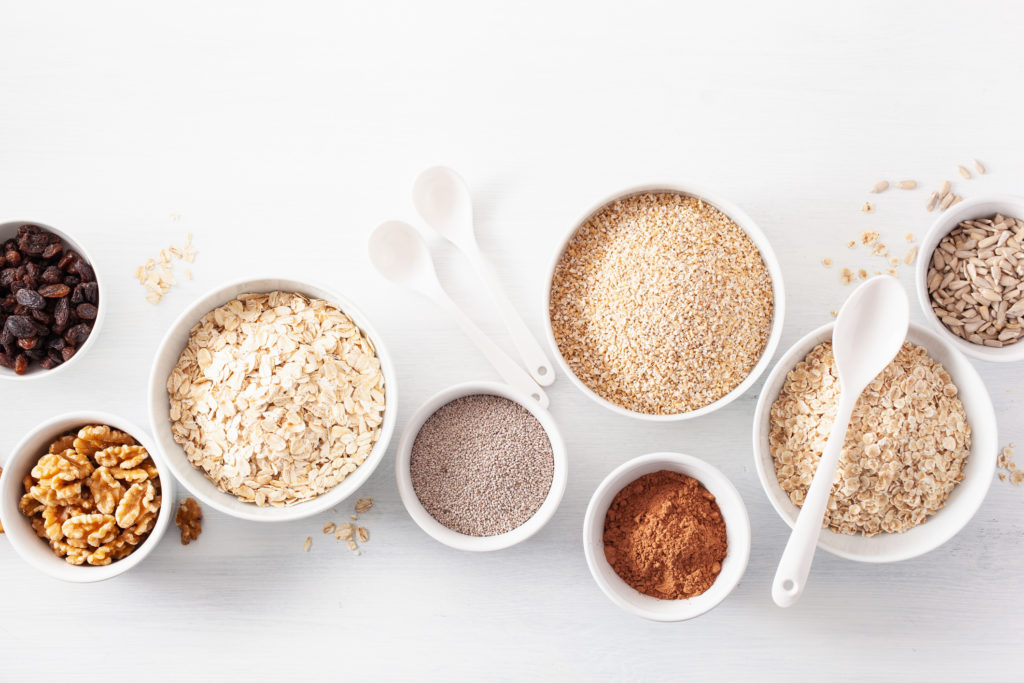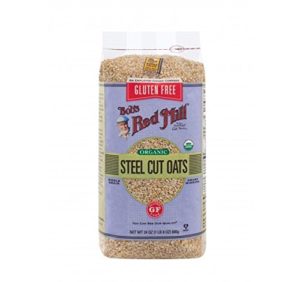I feel like I need to include every sort of disclaimer here because some of these foods are not perfect, and I am sure many will find reasons to criticize them. However, I will absolutely admit how hard it can be to switch your family to a whole food-based diet when coming from the standard American diet. While some of these foods are not ideal and can be very inflammatory due to poor quality oils, sugar, non-organic, high in x,y,z, etc., they may help reduce free glutamate exposure or are slightly cleaner options when switching to a whole food diet. Strictly avoiding processed sources of free glutamate was essential to our health, especially our son’s neurological health.
Our sensitivity to free glutamate has changed over time. Initially, the smallest exposure would disrupt mood, behavior, and physical symptoms for days. However, as we have worked to get to the root of the dysfunction, our sensitivity is nearly gone.
Please remember that some of these foods can also feed underlying pathogens, creating a surge in glutamate, and that diet should be tweaked to fit your individual needs.
The following items have been linked via my Amazon affiliate account, for which I may earn a commission at no additional cost to you. Products may need to be sourced based on availability and/or pricing.
Check out my Amazon page for all of my latest favorites and finds.
Be sure to take a look at my Instagram page saved stories for our favorite grocery finds, all categorized by store.
Several of the items found on this page are not brand specific. Rather, brands that we have been able to source quickly.
Grains
Organic and certified gluten-free grains are REID-approved in moderation (see REID Perfect Plate). Though they are allowed, they can be a source of inflammation, and many REID families have to go grain free at some point (our family had to go grain free for three years). When someone consumes too many grains, they can ferment in the gut. As part of this fermentation, you can see an increase in pathogens, glutamate, propionic acid (also a type of glutamate receptor), clostridia, yeast/candida, parasites, etc., contributing to pyrroles.
Unfortunately, most gluten-free processed grains, bread, baked goods, etc., have free glutamate in the form of additives (i.e. xanthan gum, yeast, etc.) and/or processing. Because of this, we switched to more of a paleo-style baked good. It is important to remember organic and certified gluten-free grains are REID approved in moderation*. However, they should ideally be consumed fairly unprocessed. The more processed, the more glutamate risk, which may be problematic for sensitive people. Take rice (naturally gluten-free). For example, glutamate will increase when you start to process the rice grains into brown rice “flour,” rice bran, parboiled, germinated, or even white rice for those highly sensitive. While black and brown are less processed and, therefore, have a lower glutamate risk. However, all of this depends on individual sensitivity. If one lacks proper digestive enzymes or has significant SIBO, high-fiber foods, like whole grains, may be hard on the gut until these issues are resolved. It is important to note that while gluten-free grains are okay in moderation, consuming too many grains can lead to additional inflammation, microbial imbalances, dysbiosis, propionic acid (a type of glutamate receptor), and increased glutamate levels as they ferment in the gut.
Dr. Katie Reid of Unblind My Mind encourages using homemade flour, although I never had it in me to consistently go that far. However, if you know you are very sensitive to free glutamate and want to follow her approach strictly, you may want to. I would encourage you to reach out to a consult with her at Unblind My Mind.
Tip: Ground pumpkin seeds or tahini can replace almond flour if there is nut sensitivity or a substantial oxalate issue. Nut flours may also constipate some, so keep that in mind. Coconut flour can be very tricky to use and doesn’t act as an equal substitute for other flour.
What Do We Eat?
Brown Rice, White Rice, Quinoa, Buckwheat
Organic Gluten Free Steel Cut Oats
We were grain-free for roughly three years but have occasionally enjoyed having a real bowl of oatmeal. We always search for certified organic and gluten-free as there is a lot of cross-contamination with grains, especially oats.
Amazon link for Bobs Red Mill Organic Gluten Free Steel Cut Oats
Organic Gluten Free Rolled Oats
We always search for certified organic and gluten free as there is a lot of cross contamination with grains, but especially oats. As I mentioned above, there is more glutamate risk with rolled oats compared to steel cut but we will use these on occasion for some baking recipes, granola and/or breakfast. We personally avoid store bought packaged options of oat-bran and out-flour
Amazon link for Bob's Red Mill Organic Gluten Free Rolled Oats
Thrive Market link for Bobs Red Mill Gluten Free Rolled Oats
Nuts and Seeds
When shopping for nuts, seeds, and nut/seed butter, I try to source organic and raw to keep risks lower. We consume a fair amount of nuts and seeds but do much better by keeping consumption reasonable, please keep this in mind when incorporating paleo-type baked goods. Nuts are also high in oxalate, can be inflammatory, and can greatly contribute to constipation for some.
Go Raw Pumpkin Seeds
Pumpkin seeds are a staple in our house as we use them as a low oxalate and nut-free version for paleo baking. We are not partial to this brand, but it is often easier to find.
Go Raw Watermelon Seeds
We are not partial to this brand, but it is often easier to find.
Let’s Do Organic Shredded Coconut
It can actually be very hard to find a clean option for shredded coconut, but this is our favorite!
Artisana Organic Coconut Butter aka Coconut Manna
This can also easily be made by pulsing clean coconut flakes in the food processor.
Organic White Chia Seeds
We prefer white chia seeds over black to disguise them a little more easily in yogurts, puddings, and smoothies
Artisana Organic Raw Almond Butter
Many clean nut/seed butter options are available, but this is ideal as it is organic and raw, without added ingredients.
Artisana Organic Raw Walnut Butter
Many clean nut/seed butter options are available, but this is ideal as it is organic and raw, without added ingredients.
Artisana Organic Raw Pecan Butter
Many clean nut/seed butter options are available, but this is ideal as it is organic and raw, without added ingredients.
Artisana Organic Raw Cashew Butter
Many clean nut/seed butter options are available, but this is ideal as it is organic and raw, without added ingredients.
Organic Sunbutter
While unroasted sun butter is preferred, we use this for nut-free school lunches if I have yet to make homemade.
Cacao Nibs
Because of the lower glutamate risk, we prefer cacao over cocoa and nibs over powder. Our Vitamin has no problem processing these when added to smoothies or turned into sauces. We did not tolerate chocolate initially, but we are fortunate enough to consume it now (In moderation) without any reaction. It can also be high in histamine, oxalate and salicylate.
Otto’s Cassava Flour
We started to use more of this product after falling in love with the yuca root and needing nut-free and grain-free options for baking. This cassava flour is not the same as tapioca flour. Heads up, this flour is high in oxalate.
Coconut Flour
We are not partial to this brand.
Aluminum Free Baking Soda
This is our go-to for baking and can easily be found at most health stores and even some Targets.
Simple Mills Pancake Mix
This item is processed and reaction to this may be based on individual sensitivity.
Simple Mills Chocolate Muffin/Cake Mix
Full disclaimer, we did not use this product or many of their products early on, but this has become a quick option to leave in the pantry for unexpected events. While this product is relatively lower in glutamate, the processing, flours and some ingredients may be problematic for some. It can be high in oxalate, phenol, salicylate because of the flours and slightly higher in histamine/glutamate because of the chocolate.
Sweeteners
Refined sugars can be very inflammatory and can result in a glutamate surge. While we purposely try to limit the consumption of these foods, here are some of the sweeteners we have replaced traditional refined sugars with; raw organic honey, dates, organic maple syrup, and coconut sugar (not for daily consumption but would be better than cane or beet sugar). Here are some examples of sweeteners we use:
Maple Syrup
Depending on individual sensitivity this may be problematic for some.
Coconut Sugar
Not daily consumption but would be a better option than cane or beet sugar
Enjoy Life Chocolate Morsels
While there is some glutamate risk with chocolate in general, these are one of the cleaner options out there and may be used if tolerated. We did not tolerate chocolate initially, but we are fortunate enough to consume it now (in moderation) without any reaction. It can also be high in histamine, oxalate, and salicylate.
Hu Chocolate Bars
We are OBSESSSED with Hu Chocolate Bars! Again, there is some glutamate risk with chocolate in general, but we like that they use cacao over cocoa and coconut sugar over regular sugar. We did not tolerate chocolate originally but are fortunate enough that we can consume it now (In moderation) without any reaction. It can also be high in histamine, oxalate, and salicylate.
Vanilla Beans
Vanilla beans are one of the most expensive crops available, and because of this, we don’t always buy organic. We use these in everything from baking to homemade vanilla extracts, ice cream, etc.
Baking Powder is another to be aware of. It is highly processed and often contains free glutamate as cornstarch. A quick sub for baking powder is mixing equal parts fresh lemon juice and baking soda.
Salt– we also use Himalayan or sea salt to lower our glutamate risk.

